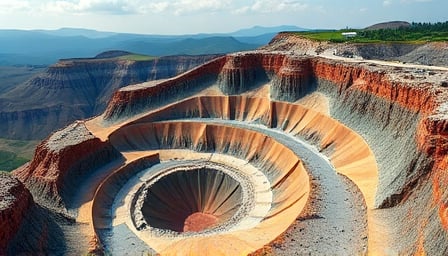Tibet Mineral Development Co Ltd: Navigating the Metals & Mining Sector Amidst Market Dynamics
In the bustling landscape of the materials sector, Tibet Mineral Development Co Ltd, a prominent player based in Lhasa, China, continues to make waves. As a company primarily engaged in mining chromium iron ores and producing chromium iron alloys, while also exploring and processing copper and gold, Tibet Mineral Development has carved a niche for itself on the Shenzhen Stock Exchange. With a market capitalization of 10.45 billion CNH and a close price of 23.3 CNH as of July 21, 2025, the company’s financial metrics, including a high price-earnings ratio of 134.53, reflect both its potential and the challenges it faces in a volatile market.
Market Movements and Strategic Outlook
Recent developments in the broader metals and mining sector have seen a notable uptick, particularly in lithium and rare metals, which could indirectly influence Tibet Mineral Development’s strategic positioning. The lithium sector’s surge, with companies like Yongsan Lithium reaching their price limits, underscores a growing demand for materials critical to the green energy transition. This trend is mirrored in the rare metals ETF, which saw a significant rise, indicating investor confidence in the sector’s growth prospects.
For Tibet Mineral Development, the focus remains on its core products, including chromium iron ore. Despite not producing chromium iron alloy, the company’s strategic importance in the local chromium iron ore market cannot be understated. The potential demand from infrastructure projects, such as the Mothang hydroelectric station, highlights the critical role of chromium iron ore in the production of special steel materials, although the company has yet to venture into alloy production.
Regulatory Environment and Market Opportunities
The announcement of a stable growth plan for key industries, including steel, non-ferrous metals, and chemicals, by the Ministry of Industry and Information Technology, signals a positive shift towards structural adjustments, supply optimization, and the elimination of outdated capacities. This regulatory environment could provide a conducive backdrop for Tibet Mineral Development to explore new opportunities and optimize its operations.
Moreover, the tightening of export controls on certain rare earth materials by China, covering upstream oxides to downstream products like neodymium iron boron magnets, underscores the strategic importance of rare earths and related materials. This regulatory move, aimed at strengthening supply-side control, could potentially elevate the strategic value of rare metals, including those explored by Tibet Mineral Development.
Conclusion
As Tibet Mineral Development Co Ltd navigates the complexities of the metals and mining sector, its strategic focus on chromium iron ore, coupled with the exploration of copper and gold, positions it well to capitalize on emerging market trends and regulatory shifts. The company’s ability to adapt to the evolving landscape, marked by increased demand for materials critical to the green energy transition and strategic metals, will be crucial in sustaining its growth trajectory and enhancing shareholder value in the years to come.
